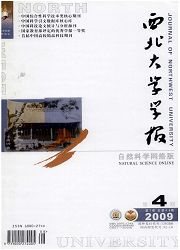

 中文摘要:
中文摘要:
为了探究铜绿假单胞菌抗羧苄青霉素的机制,通过基因敲除以及克拉维酸钾和羧苄青霉素协同实验对羧苄青霉素抗性菌株进行研究。在对羧苄青霉素具有抗性的转座突变体基础上敲除ampC后,其对羧苄青霉素抗性没有变化;8株羧苄青霉素抗性转座突变体菌株克拉维酸钾协同实验呈阳性。基因组中预测为届内酰胺酶的PA5514基因的敲除突变菌株及过表达菌株对氨苄青霉素以及羧苄青霉素的敏感性也没有变化。结果说明ampC及PA5514表达升高并不是羧苄青霉素抗性转座突变体抗性产生的原因,基因组中存在新的受克拉维酸钾抑制的口内酰胺酶可能是铜绿假单胞菌抗羧苄青霉素的一种新机制。同时,克拉维酸钾与羧苄青霉素联合使用能够提高羧苄青霉素对铜绿假单胞菌抗性菌株的治疗效果。
 英文摘要:
英文摘要:
To characterize the mechanism of carbenicillin resistance in Pseudomonas aeruginosa transponson mutants. The mutant lacking ampC on PA0496T background caused no change to carbenicillin susceptibility. Eight transposon mutants showed a reduced susceptibility when carbenicillin was combined with the β-lacta- mase inhibitor clavulanate. Overexpression or deletion of a putative β-lactamase gene PA5514 also had no effect on the susceptibility to carbenicillin in Pseudomonas aeruginosa. The results showed that a new unchar- acterized β-lactamase in Psedumonas genome might contribute to carbenicillin resistance. Carbenicillin com- bined with cavulanate exhibited inhibitor activity and could potentially be used to treat patients with currently pseudomonas infection.
 同期刊论文项目
同期刊论文项目
 同项目期刊论文
同项目期刊论文
 期刊信息
期刊信息
